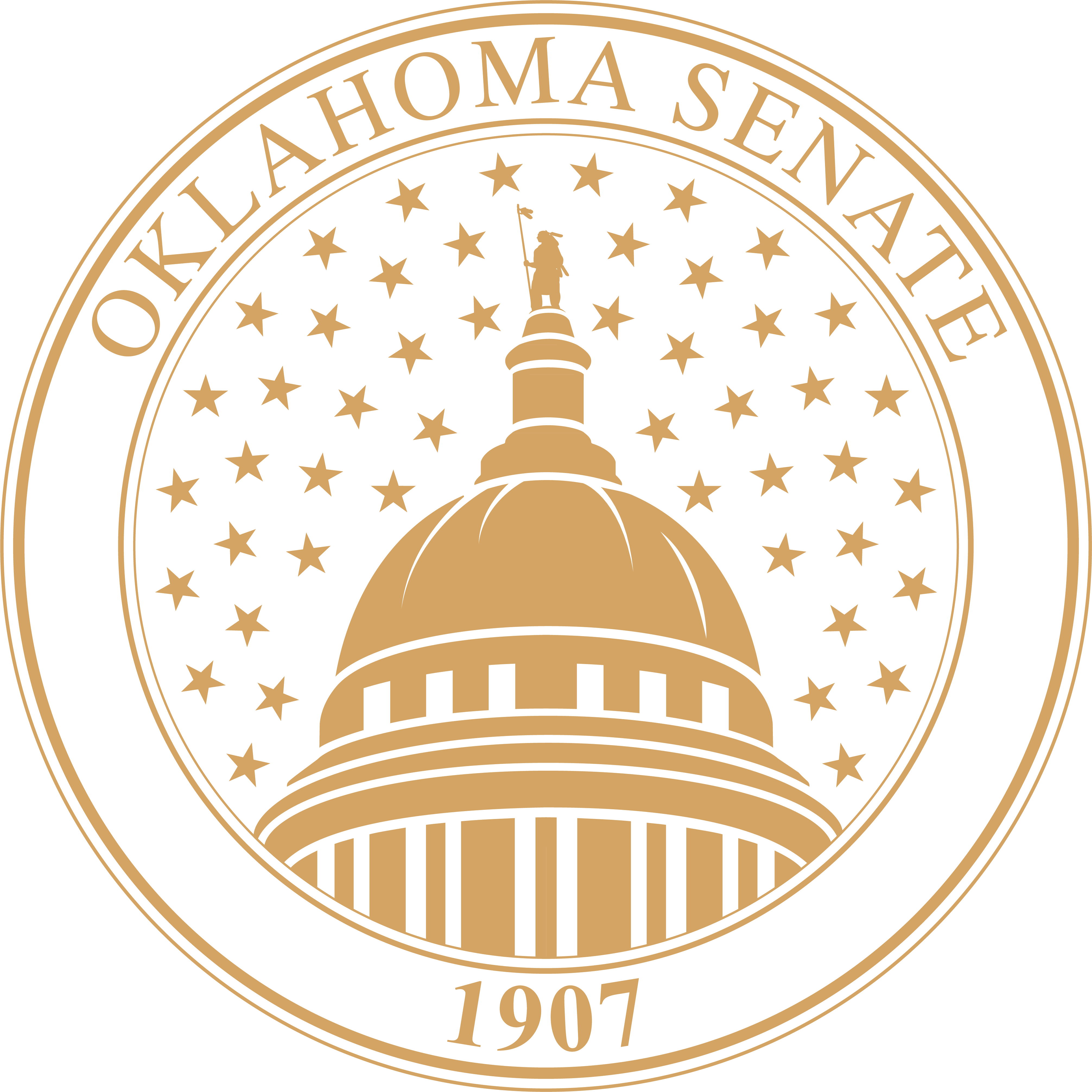In order to provide equal access and equal opportunity to people with diverse abilities, this site has been designed with accessibility in mind. Click here to view
Pro Tem Responds to Daxon Comments Statement from Senator Stratton Taylor, President Pro Tem
STATEMENT FROM SENATOR STRATTON TAYLOR, PRESIDENT PRO TEM:
"Judging by the way he constantly bad mouths our state, Tom Daxon must get a cash bonus from his boss Governor Keating every time he says something negative about Oklahoma. If Tom Daxon would pull his head out of the sand long enough to examine the many positive economic reports about Oklahoma, he might become an effective advocate for our state, instead of a nattering nabob of negativism. Mr. Daxon probably didn't realize it, but when he launched his latest attack on Oklahoma, he simply underscored the need for a stronger state education system.
If the report from the U.S. Commerce Department proves anything, it is that Oklahoma must invest in education, now more than ever. The only way to significantly increase personal income, according to the experts, is by increasing our number of college graduates, the people with the most earning power. It is estimated that to rise to the national average, Oklahoma will have to add at least 70,000 college graduates. Given this incontrovertible fact, it's amazing that Tom Daxon continues to peddle a budget that treats public education like a second class citizen.
If Tom Daxon and Governor Keating are truly interested in economic growth, they will endorse the legislative budget proposal that invests $218 million new dollars in education. For every dollar we invest in education, we reap several dollars in return in economic development.
The same cannot be said of the proposals championed by Governor Keating and Tom Daxon. There's not a single shred of evidence that shows the Keating program would increase our personal income by even a percentage point. For example, his tax cut program is little more than a campaign slogan with no hard evidence of any economic value. His workers' compensation program is non-existent because he has yet to offer a single concrete reform proposal of his own.
If we want Oklahoma's economic growth to continue, we must invest in proven programs like education and Quality Jobs. We need specifics, not feel-good, empty slogans.
Although I certainly would have liked for Oklahoma to have achieved a higher ranking in the latest report, it's important to point out that our state continues to be a leader in many other areas of economic performance (see attached sheet). It is also important to note that the Commerce Department study did not take into account Oklahoma's unusually low cost of living, a great selling point in economic development. When adjusted for cost of living, Oklahoma's per capita personal income rises to 98.1 percent of the national average. Although Tom Daxon will never admit it, everyone knows that you can stretch a dollar farther in Oklahoma than you can in California or Connecticut. For example, a dollar has 38 percent more purchasing power in Oklahoma than it does in Connecticut, the state with the highest per capita personal income according to the latest report."
What Inquiring Minds (Not Tom Daxon) Want to Know:
-The Oklahoma Legislature enacted an unemployment tax cut, saving businesses an estimated $21 million this year alone. Additional cuts are currently under consideration.
-A recent study rated Oklahoma as one of the lowest tax states in the country, 44th in state/local tax burden, 48th in property taxes, 43rd in corporate taxes. The average Oklahoman pays $544 less in taxes annually than does the average American.
-When adjusted for Oklahoma's low cost of living, our personal income jumps from 80 percent of national average to 98.1 percent. Economists say this is the best measurement of state to state personal income.
-Thanks to reforms approved by the Oklahoma Legislature, workers' comp costs were reduced by 4.5 percent by the State Property and Casualty Board.
-Thanks to welfare reforms approved by the Oklahoma Legislature and a growing economy, welfare rolls have declined by 11 percent last year (5,106 AFDC cases were dropped from the rolls). The rolls have been declining for the past 2 and a half years, approx. 7,000 less.
-Oklahoma is predicted to lead its nine-state region in economic growth in 1996, according to Mid-American Business Conditions Index released this January. The index calls the Oklahoma economy "one of the healthiest" in the country.
-Standard and Poors, a nationally recognized investment adviser, gave Oklahoma's economy high marks in a 1995 business climate analysis.
-Oklahoma's statewide unemployment rate was consistently below the national average in 1995 and significantly lower than the state jobless rate in 1994 (Source: State Employment Securities Commission).
- From the 1st quarter of 1994 to the 1st quarter of '95, Oklahoma exceeded the national average in almost all areas of employment growth, except the growth of government jobs (Source: U.S. Bureau of Labor Statistics). In other words, Oklahoma was producing more jobs than the national average in fields like construction and manufacturing.
-Oklahoma's General Business Index, a compilation of economic indicators tracked by Southwestern Bell, has shown steady improvement for 9 consecutive years with significant increases posted in 1992, '93, '94 and '95.
-According to the Houston-based Telecheck, Oklahoma has consistently led its region and sometimes the nation in retail spending increases during 1995.
-Oklahoma was only one of eight states to cut the size of state government this decade.
 Oklahoma Senate
Oklahoma Senate

